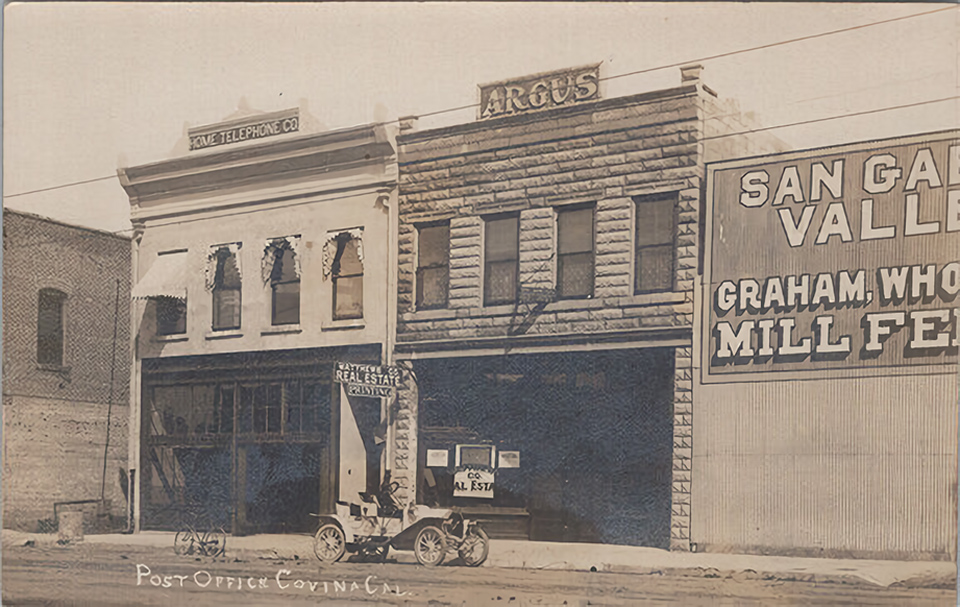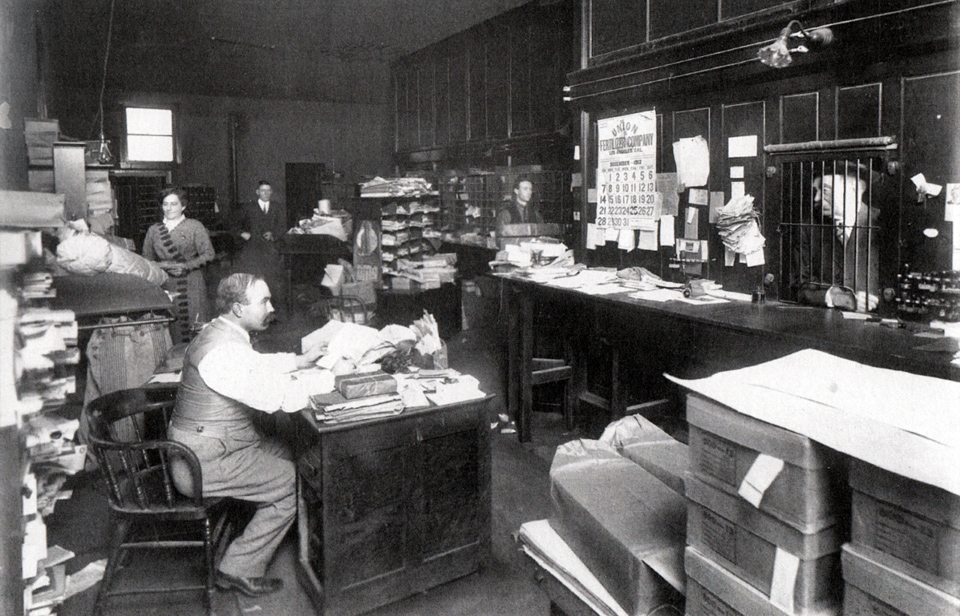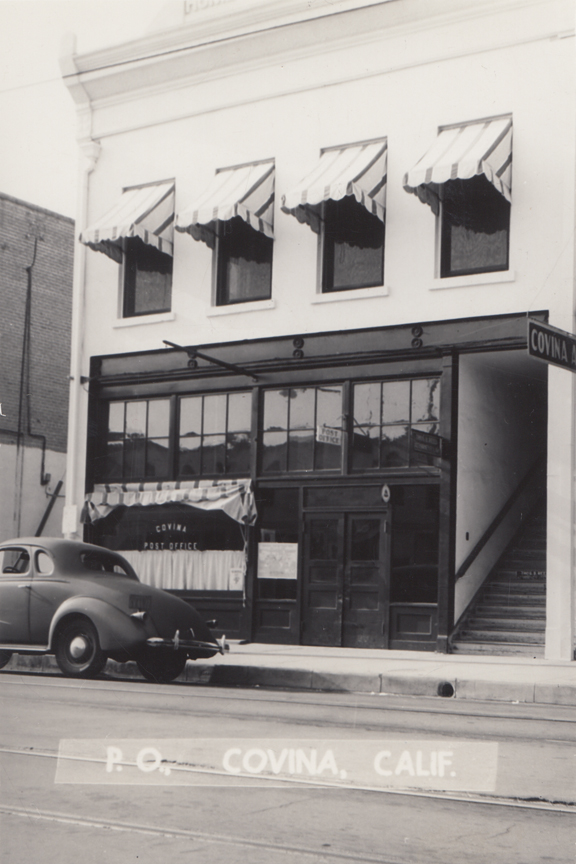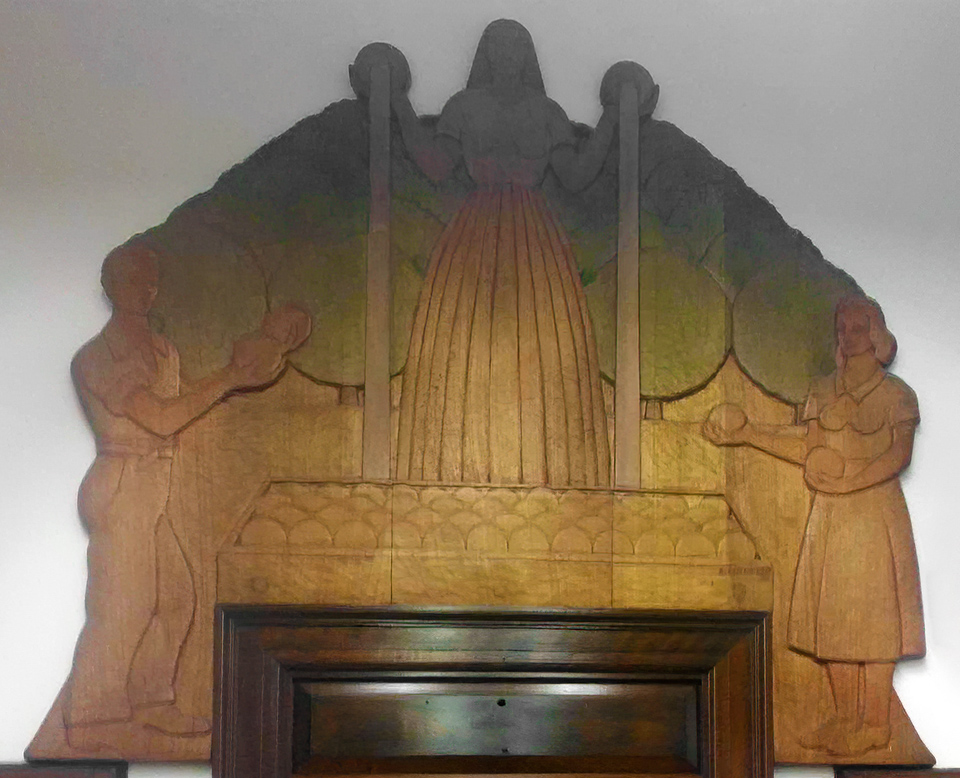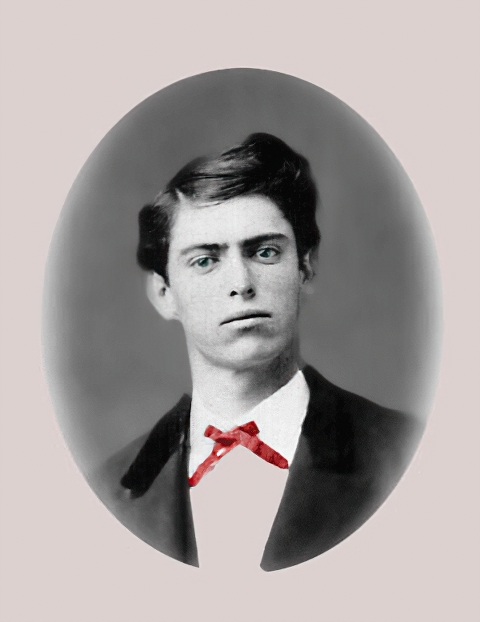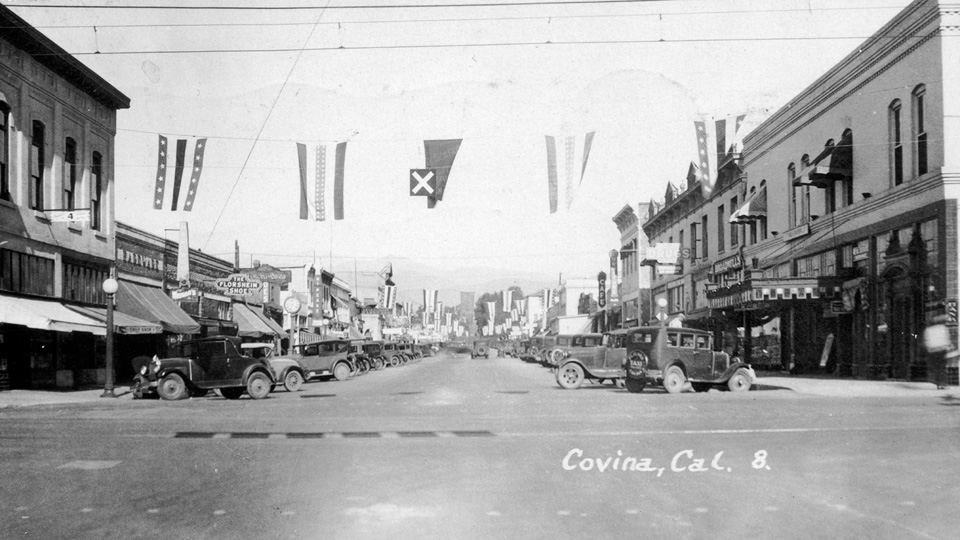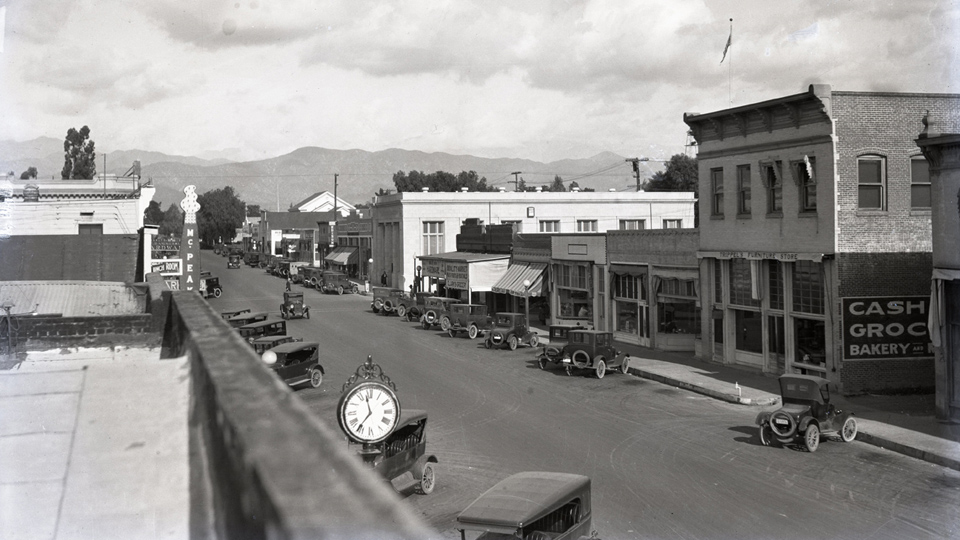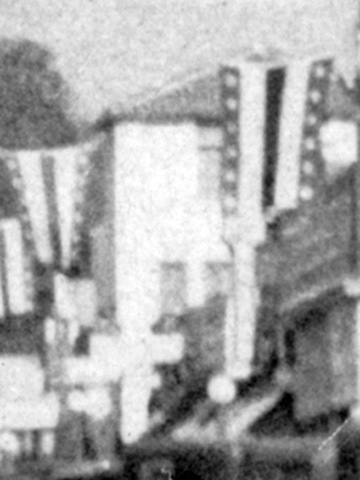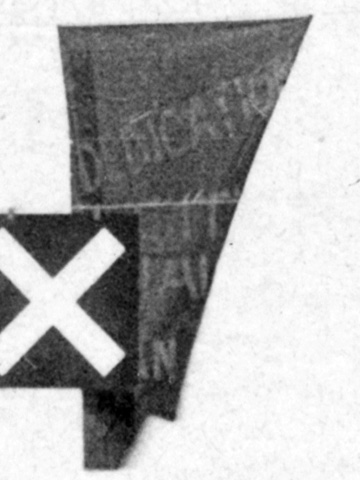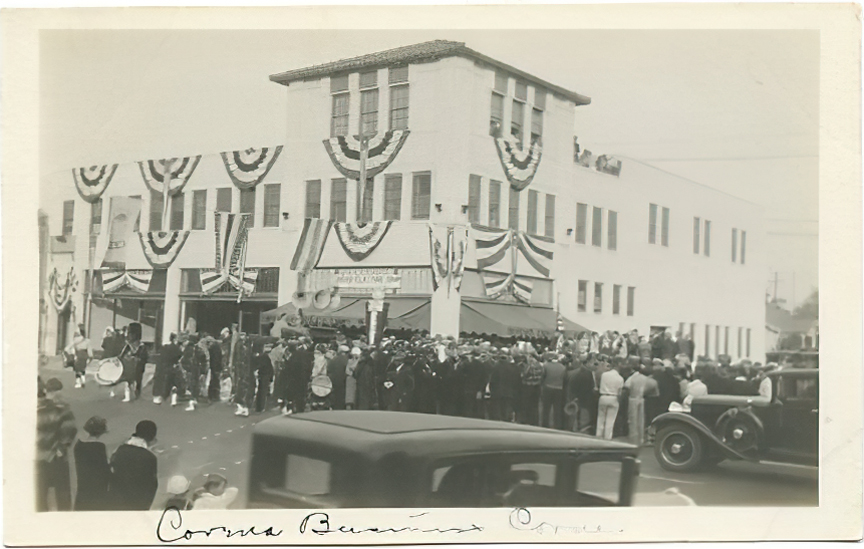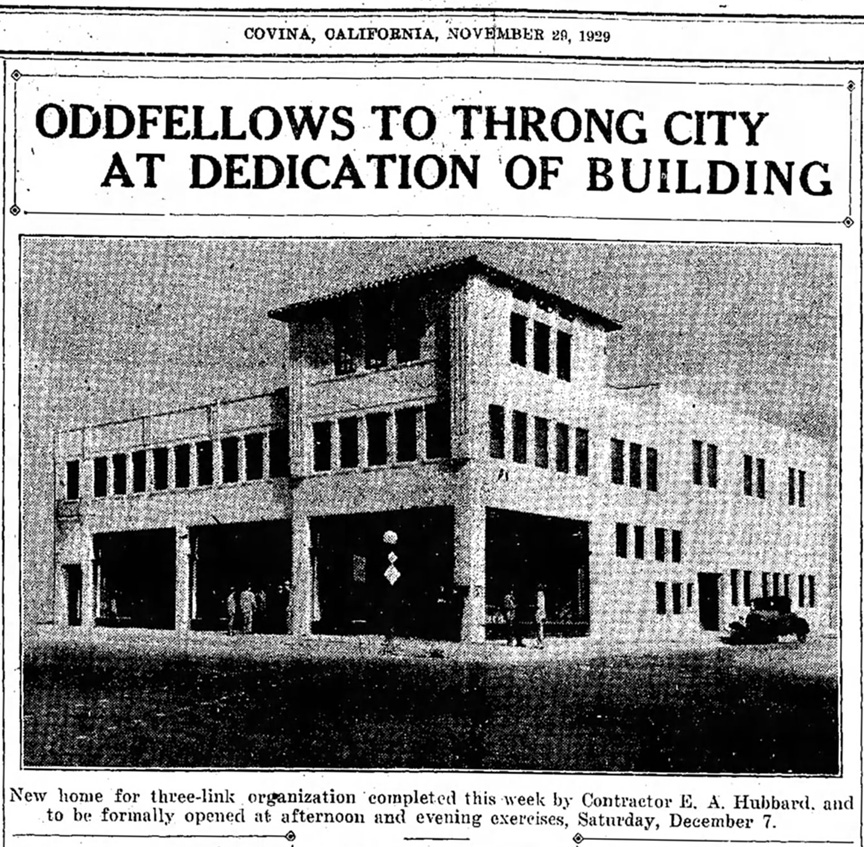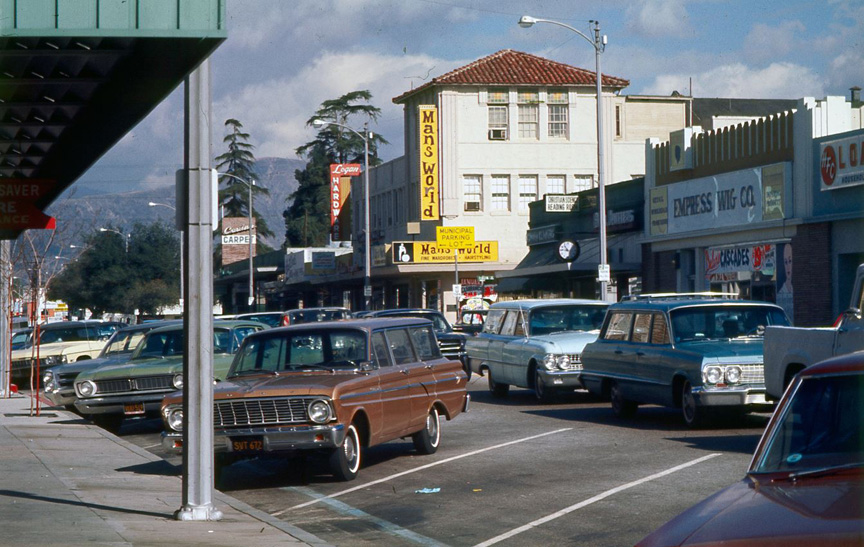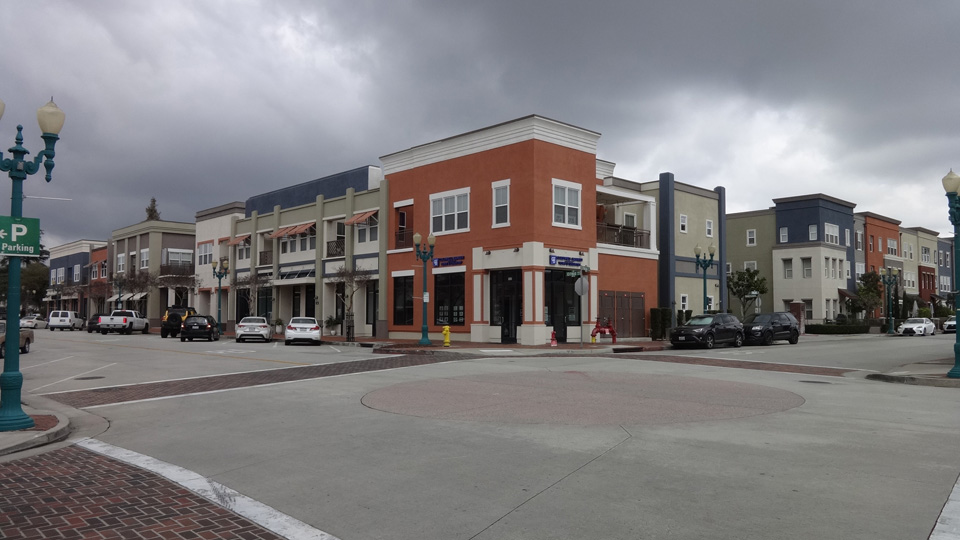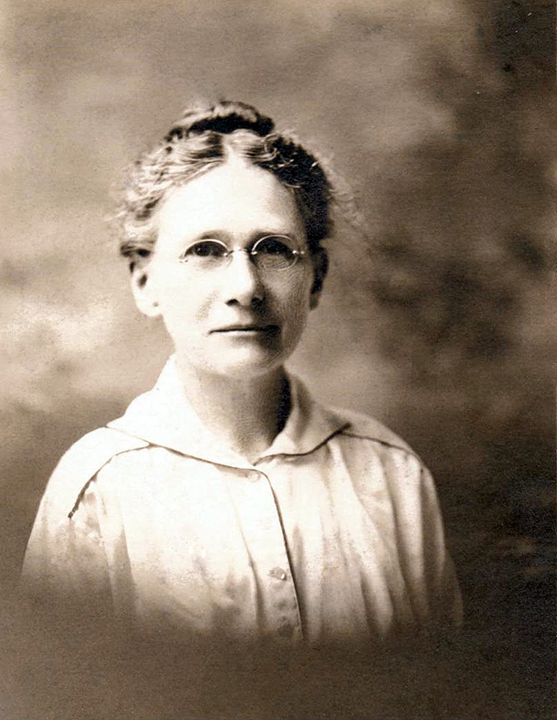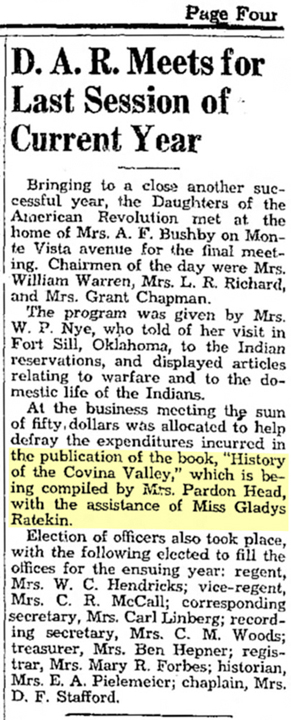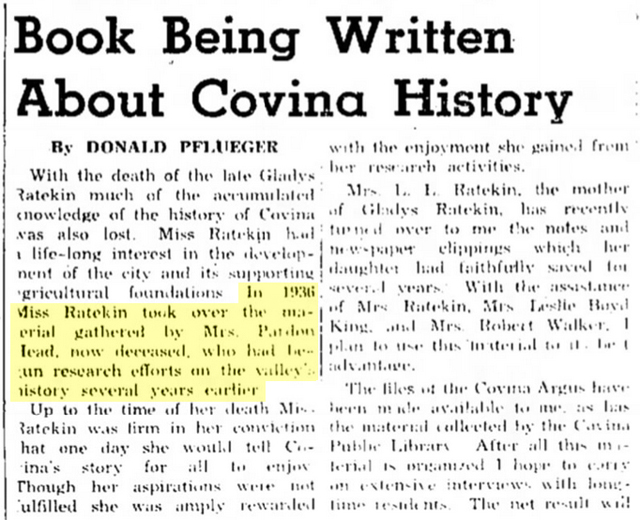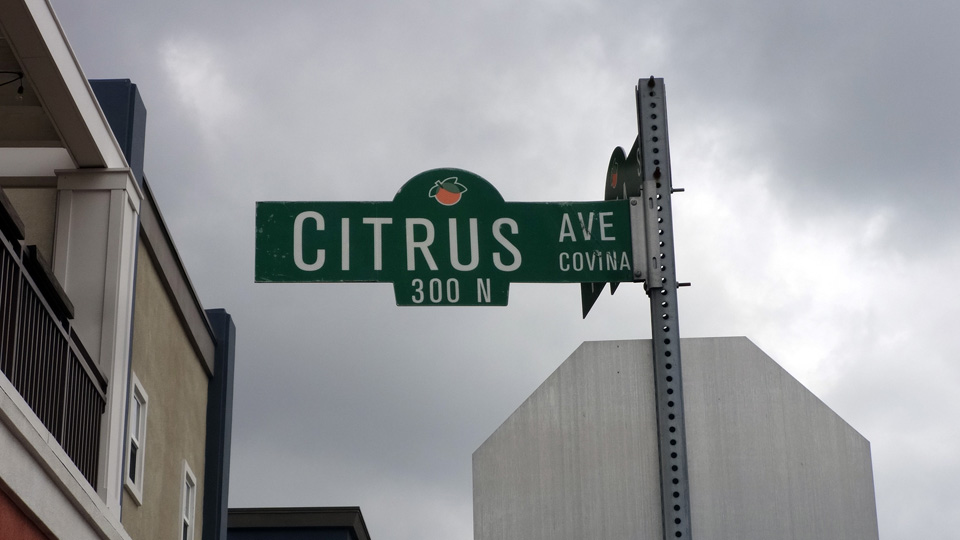It was a household name to just about everybody who lived, worked or grew up in Covina in the latter half of the 20th century, but the story behind the store and its familiar landmark location has largely been lost to history.
It all started with Reginald F. Buller (1840-1913):1 a banker and former state senator from Idaho who retired to southern California in 1908.2 Although he initially intended to settle in Covina, his only enduring contribution to the city turned out to be the erection of a business block at 126 N. Citrus Avenue: the address of the gift shop known to later generations of Covinans as "Custer's."
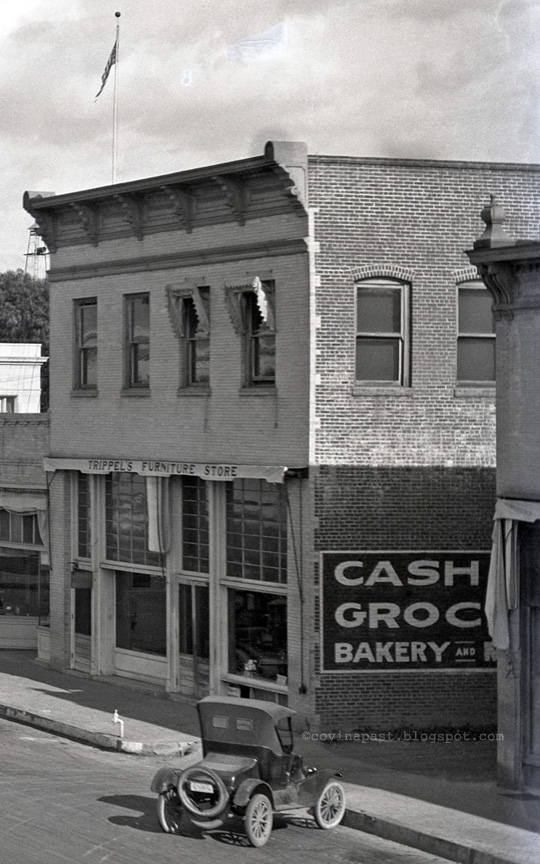
The Buller block was still as-built with its crowning cornice when this photo was taken in 1925.
Click image for an enlargement.
Buller bought the land for his planned 2-storey commercial structure in May, 1908.3 The parcel was originally the site of the 1891 Warner Brothers grocery,4 and its successor company would become the new building's primary tenant. Pioneer contractor Clarence Allison constructed the Buller block in early 1909,5,6 and Warner, Whitsel & Co. opened their new store to great local fanfare that June.4
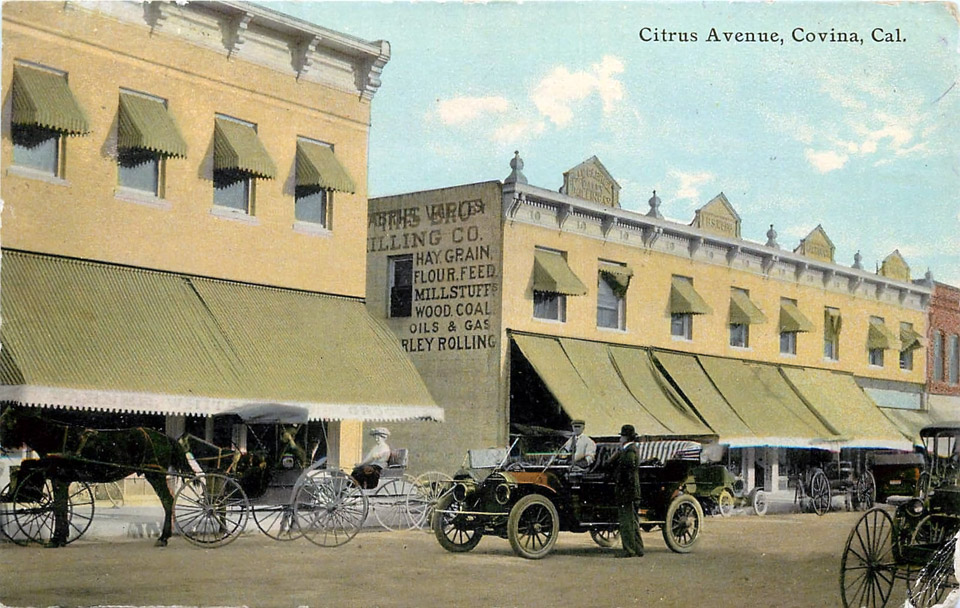
The Warner, Whitsel & Co. grocery store in the Buller Building (left) c.1910.
Only ten years later, however, Warner-Whitsel announced it had been unable to renew its lease with Buller's estate, so the grocery moved two doors south to the Webb Building at 118 N. Citrus.7 Thenceforth, from 1921 until after the Second World War, the Buller Building would be occupied by a series of furniture stores: Gillett's (1921),8 Trippel's (1922),9 Scofield's (1928)10 and Sawyer's (1936).11
Meanwhile, on September 7, 1909, just up the street at 142 N. Citrus,12 a Mr. J. H. Shafe opened the book and stationery store that would eventually become Custer's.13 In 1911, it changed hands and its name to the Covina Book Store,14 and then again in 1921 to the Covina Book and Art Shop.15 Under that name, it passed through a series of owners until 1928 when it was bought by Clyde C. Custer (1899-1955),16 son of pioneer undertaker William Q. Custer (1860-1936).17
After Warner, Whitsel & Co. closed for good in 1928,18 Clyde Custer moved the Covina Book and Art Shop into the grocery's former space at 118 N. Citrus.19 Then, in February, 1945, he bought 126 N. Citrus,20 and moved his business there in the second week of March, 1946, renaming it Custer's Gift and Stationery Store.21 After Mr. Custer died in 1955,22 it continued to be operated under the family name well into the early 21st century.

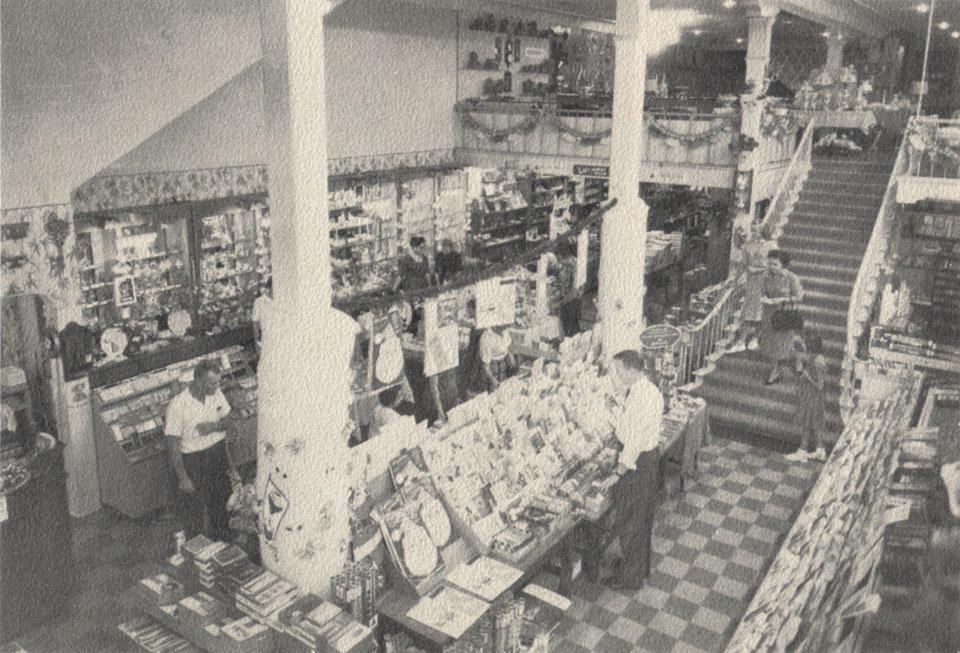
Custer's Gift & Office Supply, 1960.23
Fast forward into the future...
